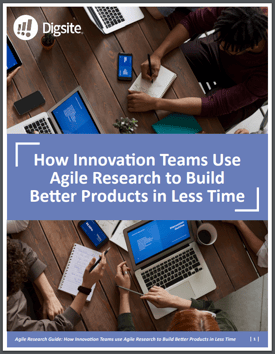Today’s leading organizations are increasingly employing agile approaches to developing new marketing programs, product or service innovations and customer experiences. By leveraging agile market research methods, your organization is able to simultaneously design, test and build new solutions before going to market. This approach speeds time to market, while still ensuring your go-to-market strategy fits with consumers’ changing lifestyles, situations and needs.
Our monthly blog post offers practical tips and advice on how to implement agile research. August's agile tips are centered around the ways in which you can incorporate System 1 thinking into your research, and are provided by Joyce E. Borthwick, one of Digsite's expert consultants.
Tip 1. Don’t Just Focus on What’s New or Different
When testing a new product or concept, it’s important that you understand what you’re offering, what feels new, and what people are already familiar with. Make sure to focus new features as well as what’s familiar and comfortable so you can ensure your concept can be internalized by consumers.
Tip 2. Consider a Timed Test
When showing your stimulus to participants, consider giving the participant a fixed number of seconds to respond or provide information. By putting a timer on their response, you will get insight into immediate, gut reactions of your participants.
Tip 3. Capture Initial Reactions in Real Time
When testing a product, have participants take quick videos of themselves so you can see initial reactions and facial expressions. With video, you’re not just hearing a rating, you’re seeing participant faces to really see what they’re telling you vs. what they’re showing you.
Tip 4. Incorporate the Seven Universal Facial Emotions
There are seven universal emotions, each with their own unique and distinctive facial expressions. Those emotions are: happiness, sadness, fear, disgust, anger, contempt and surprise.

Show participants a graphic that represents the 7 emotions, whether it be with emojis or pictures, and have them pick the emotion that best represents their experiences and have them talk about what it means to them.
To see how four real-world companies are moving away from costly and time-consuming stage-gate development processes and prioritize innovation while operating with agility, check out our eBook: How Innovation Teams Use Agile Research to Build Better Products in Less Time.




